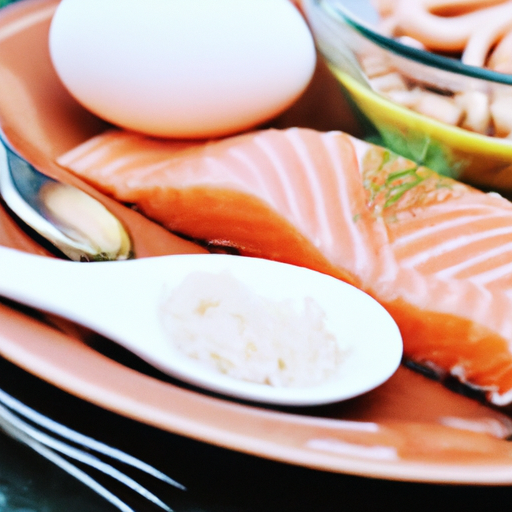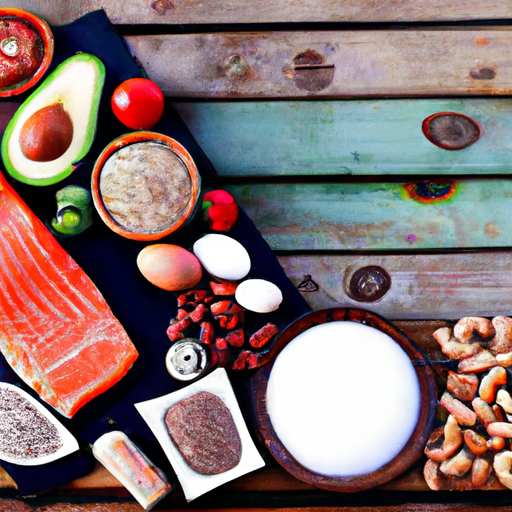In this article, you will learn about the key differences between the Keto diet and the Atkins diet. We will examine the main principles and goals of each diet, as well as their similarities and benefits. By the end of this article, you will have a clearer understanding of which diet may be more suitable for you and your health goals.
Overview of the Keto Diet
The Keto diet, short for the ketogenic diet, is a low-carbohydrate, high-fat diet that has gained popularity in recent years for its potential benefits in weight loss and improved health. The main objective of the Keto diet is to induce a state of ketosis in the body, where it relies primarily on fat for energy instead of carbohydrates. This is achieved by greatly reducing carbohydrate intake and increasing fat consumption.
Overview of the Atkins Diet
The Atkins diet, created by cardiologist Dr. Robert Atkins, is a low-carbohydrate diet that has been around for several decades. The diet is divided into phases, with the initial phase being the most restrictive in terms of carbohydrate intake. The Atkins diet focuses on controlling insulin levels and promoting weight loss by reducing carbohydrate consumption and increasing protein and fat intake.
Are You a Ketosis Master? Take Our Quiz!
Dietary Composition
Macronutrient Ratios in the Keto Diet
The Keto diet typically consists of a macronutrient ratio of around 70-75% fat, 20-25% protein, and 5-10% carbohydrates. This high fat and very low carbohydrate intake forces the body into a state of ketosis, where it starts using stored fat as its primary source of energy.
Macronutrient Ratios in the Atkins Diet
The Atkins diet also emphasizes a low-carbohydrate approach but allows for a higher protein intake. In the initial phase of the Atkins diet, carbohydrates are limited to around 20 grams per day, gradually increasing as the individual progresses through the phases. The macronutrient ratios in the Atkins diet may vary depending on the phase, but it generally involves a higher protein intake and moderate fat consumption.
Carbohydrate Intake
Strict Carbohydrate Restriction in the Keto Diet
The Keto diet requires strict carbohydrate restriction, typically limiting carbohydrate intake to less than 50 grams per day. This drastic reduction in carbohydrates is necessary to achieve and maintain a state of ketosis, where the body is burning fat for fuel instead of carbohydrates. This means avoiding most starchy foods, sugary drinks, and high-carbohydrate fruits.
Gradual Carbohydrate Addition in the Atkins Diet
Unlike the Keto diet, the Atkins diet allows for a more gradual increase in carbohydrate intake. The initial phase of the Atkins diet restricts carbohydrate intake to around 20 grams per day, but this gradually increases in subsequent phases. The idea is to find the individual’s critical carbohydrate level for weight maintenance, where they can consume a moderate amount of carbohydrates without gaining weight.
Fat Consumption
High Fat Intake in the Keto Diet
In the Keto diet, fat consumption is significantly increased to compensate for the reduced intake of carbohydrates. This high fat intake helps the body enter and maintain a state of ketosis. Foods rich in healthy fats like avocados, nuts, seeds, and oils are encouraged in the Keto diet.
Moderate Fat Intake in the Atkins Diet
While the Atkins diet does not emphasize high fat consumption like the Keto diet, it does allow for a moderate intake of healthy fats. The focus is more on protein intake, which can come from sources like meat, fish, eggs, and dairy products.
Protein Intake
Moderate Protein Intake in the Keto Diet
The Keto diet promotes a moderate protein intake, typically accounting for around 20-25% of total calorie intake. It is essential to consume enough protein to support muscle maintenance and repair but not excessively, as excessive protein intake may interfere with ketosis.
Higher Protein Intake in the Atkins Diet
In contrast to the Keto diet, the Atkins diet encourages a higher protein intake. This higher protein intake helps with satiety and muscle maintenance. Protein-rich foods like meat, fish, eggs, and dairy products play a significant role in the Atkins diet.
Ketosis and Ketone Production
Inducing Ketosis in the Keto Diet
The primary objective of the Keto diet is to induce and maintain a state of ketosis. This is achieved by severely limiting carbohydrates and increasing fat consumption. In ketosis, the liver produces ketones from fatty acids, which become the main source of energy for the body, including the brain.
Possible Ketosis in the Atkins Diet
While the Atkins diet does not specifically aim to induce ketosis, some individuals may enter a state of ketosis, particularly during the initial phase when carbohydrate intake is severely restricted. However, as the diet progresses and carbohydrates are gradually added back, the body may shift out of ketosis.
Duration and Phases
Continuous Approach in the Keto Diet
The Keto diet can be followed on a continuous basis, without any specific phases. Many individuals choose to adopt the Keto lifestyle long-term, making it a sustainable dietary approach for weight loss and improved health.
Phased Approach in the Atkins Diet
The Atkins diet is divided into four phases – Induction, Ongoing Weight Loss, Pre-Maintenance, and Lifetime Maintenance. Each phase has specific guidelines regarding carbohydrate intake and food choices. The phased approach in the Atkins diet allows for a gradual increase in carbohydrate intake and more flexibility in the long term.

Health Benefits and Risks
Weight Loss and Metabolic Effects in the Keto Diet
The Keto diet has been shown to be effective for weight loss, particularly in the short term. It can also have positive effects on blood sugar control, cholesterol levels, and triglyceride levels. However, long-term effects and potential risks, such as nutrient deficiencies and heart health concerns, are still being studied.
Weight Loss and Health Impact in the Atkins Diet
Similar to the Keto diet, the Atkins diet has been shown to be effective for weight loss. It has also been associated with improvements in blood sugar control, blood pressure, and triglyceride levels. However, concerns about the long-term effects on heart health and the potential for nutrient deficiencies have been raised.
Exercise and Physical Activity
Incorporating Exercise in the Keto Diet
Exercise can be a valuable addition to the Keto diet for overall health and weight loss. It is important to prioritize low-impact exercises, as intense workouts may be challenging due to the reduced carbohydrate availability for energy. Adequate hydration and electrolyte balance are also crucial during exercise.
Exercise in the Atkins Diet
Similar to the Keto diet, exercise is encouraged in the Atkins diet for overall health and weight management. Regular physical activity can help improve cardiovascular health, muscle strength, and overall well-being. The choice of exercise can be tailored to individual preferences and abilities.

Conclusion
Key Differences Between the Keto Diet and the Atkins Diet
While both the Keto diet and the Atkins diet share similarities in terms of low carbohydrate intake, they differ in macronutrient ratios, approach to ketosis, and phases. The Keto diet prioritizes high fat intake, strict carbohydrate restriction, and a continuous approach, aiming for a state of ketosis. On the other hand, the Atkins diet allows for a more gradual increase in carbohydrates, moderation in fat intake, and a phased approach.
Personalization and Commitment for Success
Choosing between the Keto diet and the Atkins diet ultimately depends on individual preferences, goals, and medical considerations. It is crucial to personalize any dietary approach and ensure a balanced intake of essential nutrients. Consulting with a healthcare professional or registered dietitian is recommended before starting any new diet or lifestyle change. Additionally, long-term success on any diet requires commitment and consistency.



